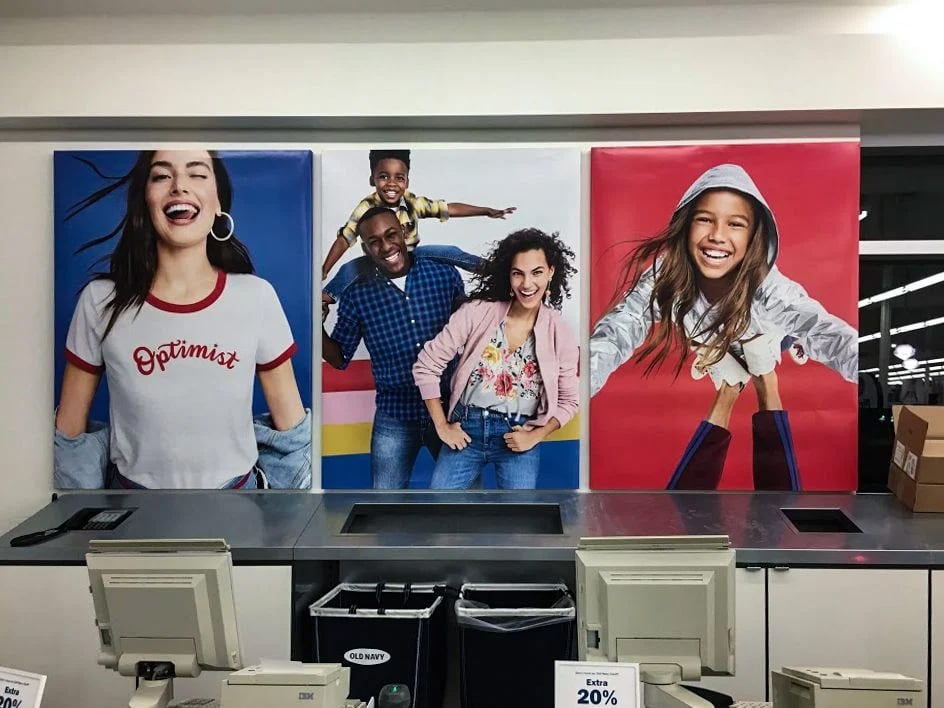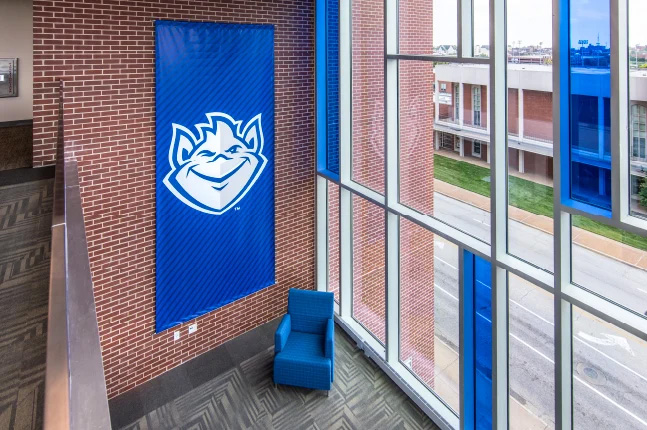Large Format Printing Material
Business owners are well aware of the importance of marketing. It makes their company stand out from the other businesses and contributes to their...
6 min read
Craftsmen Industries Sep 14, 2023 10:26:00 AM

Large format printers are a vital asset in industries like advertising and architecture. They offer the unique capacity to produce stunning displays, delicate blueprints, and detailed plans. Having a grasp of how to operate large format printing machine will make for more efficient work and allow you better control over the projects.
In the advertising world, large-format printers play a crucial role in creating promotional materials like banners and posters, but they also serve as a way for individuals to showcase their creativity. In other fields, like architecture, they allow architects to manifest their ideas into detailed visual representations. This allows them to communicate better with clients, builders, and other team members.
Operating large format printers requires a significant amount of creativity as well as technical know-how. The article will delve into the process and provide you with simple guidelines you can follow to execute printing tasks.
Running a large-scale printing device requires having a decent amount of understanding of the equipment. The machine functions by coordinating various components, but it’s the operator who must ensure that they work in harmony. This is possible through correctly setting up the materials, adjusting the print settings, and observing the process for any issues that might arise.
Elevate your brand’s visibility to the next level by using our large format printing services. Here at Craftsmen Industries, we use cutting-edge technology and aim to deliver stunning visuals to make your brand stand out. Whether it’s banners, posters, or any other type of signage you need for your brand, we can make it better and more engaging for your potential customers.
Regardless of the industry, the design is a critical step in printing as it serves as the blueprint for turning ideas into tangibles. A good design is a combination of form and function that come from having an understanding of the target audience. It’s not only about having an appealing look but also about providing functionality and satisfying practical needs.
Sometimes the most difficult thing is to turn ideas into concepts, as the gap between imagination and reality can be too big. The conceptualization of the project is a pivotal stage around which all of its elements will revolve, and it will influence all future decision-making.
When creating the concept, no stone should be left unturned in terms of ideas, but eventually, all of them should either take a coherent shape or be discarded. A critical aspect of this step is communication with other team members or stakeholders in the project. It’s important that their understanding is on the same wavelength as yours, and their insight will be valuable to the design.
This step is about putting the ideas and concepts into practice. The materialization of subjective thoughts into concrete images and words is usually made through graphic design software like Adobe Photoshop or one that is specific to the printer you have.
Pay attention to font sizes, styles, and overall readability, especially from the intended distance. If your design extends to the edge of the material, add extra space and crop marks to allow slight variations during the trimming.
Arrange the visuals as per your liking and have someone review the work so you get an outside perspective on its appearance. Once you edit the material, then the process is ready for the next step.
Your design must match the dimensions of the print material. Larger prints require higher resolution to maintain image quality, so adapt the format accordingly. An important aspect to consider is the printer’s capacity, as you don’t want to overwhelm your machine by giving it demands that go beyond its ability.
Monitors and printers use different color spaces to represent each color. This step is about ensuring that the colors you see on your monitor match the ones in the print. This is essential for having an accurate end product that’s true to the design.
The process of color management can be done through the graphic design software you use. Calibrate the settings of your monitor to ensure that the colors are accurately represented in the print. This is possible through the use of ICC profiles which are sets of data that describe the color behavior of devices.
Proofing is a way to see the progress of your work and how the design actually looks on paper. It’s done by printing a small version of the design on a standard printer, so as to check the coloring, layout, and overall appearance.
After you make the necessary reviews, it’s time to go to the next steps of the task.
Choosing adequate printing materials is vital to getting the desired outcome. Materials have varying textures, weights, and durability, which can greatly impact the final appearance and functionality of the printed piece.
The intended use and the environment where the printed piece will be exposed are both important factors for selecting the right material.
Paper is the most prevalent printing material used for all types of printers. It’s a preferred option because of its affordability, versatility, and availability. It can be used for a diverse range of projects with exceptional clarity and a good amount of detail.
Banners, posters, detailed architectural blueprints, art, etc., are all products that can be made out of paper with considerable quality. Different types of paper that can be used for large-format printing operations include:
The difference between each of these is in their composition, texture, weight, and finish. For instance, coated paper has a smooth surface, while art paper offers various textures to get an artistic touch. Blueprint paper is for technical drawings, and heavyweight paper is most suitable for displays in the advertising industry.
When choosing paper for your large-format printing machine, think of the design and what you plan to showcase. The factors that influencing are mostly related to the weight of the paper, the finish, and the durability. That’s because those characteristics have to be compatible relative to the printing technology as well as the type of the project.
Utilized for outdoor signage, banners, and vehicle wraps, vinyl is a relatively versatile material with enough durability to withstand different weather conditions. Vinyl is a synthetic material made from polyvinyl chloride, and its suitability for various applications has made it a popular printing material.
Its durability isn’t the only thing that makes vinyl an attractive choice for large-format printers. It is also appreciated for its color retention, ease of application, and adaptability to various surfaces.
Here are some of the benefits of using vinyl as a printing material:
Fabric is also a material that’s widely used for printing applications like flags, backdrops, and artistic displays. Its biggest value is that it offers a distinct visual appeal that improves the messaging and is better at establishing an emotional connection with the viewer.
There are several types of fabric that can be used when operating large format printing machine including:
Cotton canvas has a bumpy texture that makes designs feel more real, almost like paintings that you can touch. Meanwhile, polyester is a more versatile and durable solution that suits both indoor and outdoor applications. Vinyl mesh is designed for outdoor advertising, and its see through makes it ideal for resisting windy conditions, but it also gives it a distinctive look.
Finally, stretch fabric and backlit fabric offer different advantages for printing projects in different settings. Stretch fabric has the capacity to fit perfectly over frames to create a polished look without wrinkles. Backlit is ideal for illuminated displays as the fabric interacts with the light to make the details shine.
Once you’ve created the design and have decided upon the best material for your printing task, it’s time to execute the print. You will need to tailor the printing process according to the project's specific needs and the printer’s capacity.
These are the types of printers most commonly used for large format printing:
Inkjet printers have printing techniques that produce high-quality work. They work well with paper, vinyl, and multiple types of fabric. Dye sublimation printers are specifically designed for fabric and textiles, as they use heat to transfer the color patterns onto the material.
Flatbed printers are commonly used printers and they are great for printing directly on thicker and more rigid surfaces, while roll-to-roll is best for banners or other flexible materials that come in rolls. Plotters are specialized printers that work best for technical and architectural drawings.
The printer needs the file of your design to execute the desired print. The file format should be compatible with the printer’s software, with the most common formats being PDF, TIFF, and EPS. These formats preserve the image quality and ensure that the details are well displayed in the final product.
Load the file onto the printer’s control software to allow the printer to adjust the settings like resolution, color profile, and material selection.
Load the adequate material and make sure it’s properly aligned. It’s crucial that the material is set up properly because, otherwise, the print would be inaccurate. Once the printing starts, use the printer’s control interface to monitor the process.
A key part of knowing how to operate a large format printing machine is being vigilant for any hiccups that might arise during the process. By monitoring how the printer executes the task, you can address issues promptly and avoid unnecessary waste. Once the job is complete, inspect the finished prints for quality and consistency and make sure that they meet the desired standards.
After you finish with printing, let the design dry for a couple of minutes. Then you may need to perform additional tasks like trimming, mounting, laminating, etc. Before moving on to the next printing task, properly store or handle the prints according to their intended use.

Business owners are well aware of the importance of marketing. It makes their company stand out from the other businesses and contributes to their...

Whether it's for yourself or a client, large format printing is quite common. If you don’t have any prior experience, you may struggle with blurry...

Do you want to maximize the space you use for advertising outside the scope of digital media? Large format printing ideas for brand awareness...